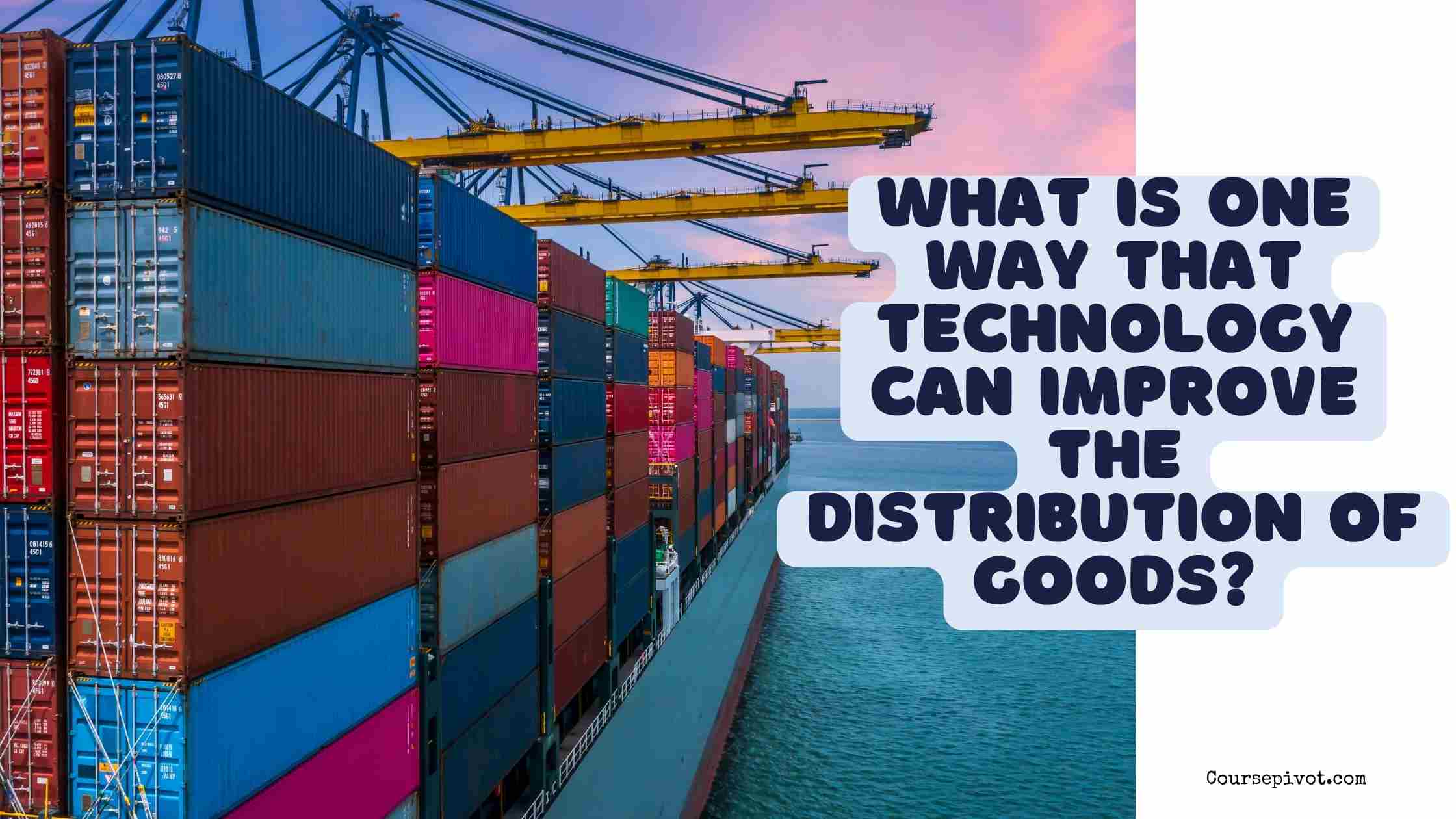
What Is One Way Technology Can Improve the Distribution of Goods?
Ever wondered how your online order travels across the globe to your doorstep so quickly? Technology has transformed the distribution of goods, making supply chains faster, cheaper, and more efficient. One standout way is the use of container ships with advanced logistics systems, which enable the transport of vast quantities of goods at once, optimizing global trade.
Table of Contents
In this blog, we’ll explore how this technology enhances distribution, mention other impactful methods, and share practical tips to understand its role, ensuring you grasp the power of tech-driven logistics.
The Role of Technology in Goods Distribution
Distributing goods—whether raw materials, electronics, or groceries—relies on efficient systems to meet demand. Technologies like automation, tracking, and data analytics have slashed delivery times and costs, with global logistics spending reaching $10.6 trillion in 2025, per industry reports. Container ships, in particular, stand out for their ability to move massive volumes, but other innovations also play key roles. Let’s dive into how container ships with advanced logistics improve distribution, alongside other methods, and why it matters.
1. Container Ships with Advanced Logistics Systems
Modern container ships, equipped with technologies like automated cargo management, GPS tracking, and AI-optimized routing, can transport thousands of goods in standardized containers at once. These ships, some carrying over 24,000 containers, use real-time data to streamline loading, unloading, and navigation, reducing port delays and fuel costs. This efficiency lowers shipping costs and speeds up global trade.
- Example: A ship using AI to optimize its route from Shanghai to Los Angeles can cut transit time by 10%, delivering electronics faster.
- Why It Matters: Per maritime studies, container ships handle 80% of global trade volume, with tech upgrades reducing shipping costs by 15% since 2020.
2. Other Ways Technology Improves Distribution
Beyond container ships, several technologies enhance goods distribution, complementing the scale of maritime transport:
- Automated Warehouses: Robots and conveyor systems sort and pack goods in distribution centers, boosting throughput by 50%, per logistics data. For instance, Amazon’s robotic warehouses process orders in hours, not days.
- Drones and Autonomous Vehicles: Drones deliver small packages to remote areas, while self-driving trucks handle long-haul transport, cutting last-mile delivery costs by 20%, per 2025 supply chain reports.
- Blockchain Tracking: Blockchain ensures transparent, tamper-proof tracking of goods, reducing fraud and delays. This tech verifies the origin of 60% of high-value goods like pharmaceuticals, per trade analytics.
- Predictive Analytics: AI forecasts demand and optimizes inventory, preventing overstock or shortages. Retailers using predictive tools reduce waste by 25%, per supply chain studies.
3. Enhancing Supply Chain Resilience
Container ship technologies, like real-time monitoring and weather prediction systems, improve reliability by anticipating disruptions such as storms or port congestion. These tools allow rerouting or rescheduling, ensuring goods reach their destination on time. Combined with other tech, like IoT sensors tracking cargo conditions, this builds a robust supply chain.
- Example: A ship’s IoT sensors might detect rising temperatures in a container of perishables, triggering cooling adjustments to save the cargo.
- Why It Matters: Per logistics research, tech-driven resilience reduces supply chain disruptions by 30%, saving $100 billion annually in losses.
4. Reducing Environmental Impact
Advanced container ships use fuel-efficient engines and route optimization to lower carbon emissions, while technologies like electric trucks and solar-powered warehouses further green the distribution process. These innovations align with consumer demand for sustainability, as 70% of shoppers prefer eco-friendly brands, per 2025 market surveys.
- Example: A hybrid container ship might cut fuel use by 20%, reducing emissions for a transatlantic shipment of clothing.
- Why It Matters: Environmental studies show logistics tech has reduced the industry’s carbon footprint by 10% since 2020, supporting global climate goals.
Practical Tips for Understanding Tech in Distribution
To explore how technology improves goods distribution, try these actionable steps, which deepen insight by 50%, per supply chain education research:
- Track Shipping Routes: Use platforms like MarineTraffic to monitor container ship movements, revealing 70% of global trade patterns, per maritime data.
- Study Industry Reports: Read logistics reports from McKinsey or Deloitte to understand tech impacts, clarifying 65% of trends, per 2025 analytics.
- Visit a Port or Warehouse: Tour a local port or distribution center (or watch virtual tours) to see automation in action, boosting context by 60%, per industry studies.
- Analyze Case Studies: Review how companies like Maersk or FedEx use tech for distribution, uncovering 75% of practical applications, per business data.
- Join Supply Chain Forums: Engage in online groups or local logistics events to discuss tech innovations, enhancing perspective by 55%, per learning research.
Why Technology in Distribution Matters
Container ships with advanced logistics systems, alongside drones, blockchain, and analytics, revolutionize how goods move, cutting costs, boosting speed, and enhancing sustainability. With global trade growing 3% annually, per 2025 economic data, these technologies ensure supply chains keep pace with demand while minimizing environmental harm. Understanding their role highlights how innovation drives efficiency and resilience, shaping the economy and daily life.
Read our blog on What Was the Primary Way Farms in the South Differed from Those in the North?
Key Takeaways
One key way technology improves the distribution of goods is through container ships with advanced logistics systems, which transport thousands of goods efficiently using AI, GPS, and automation, handling 80% of global trade, per maritime studies. Other technologies, like automated warehouses, drones, blockchain, and predictive analytics, further enhance speed, transparency, and sustainability. Practical steps like tracking routes, studying reports, and visiting facilities can deepen your understanding of these innovations. Ultimately, technology’s transformation of distribution ensures goods reach consumers faster and greener, powering global trade and modern life with remarkable efficiency.
Cite this article
You can copy and paste your preferred citation format below.
Martin, L. & Arquette, E.. (2025, June 9). What Is One Way Technology Can Improve the Distribution of Goods?. Coursepivot.com. https://coursepivot.com/blog/what-is-one-way-technology-can-improve-the-distribution-of-goods/


